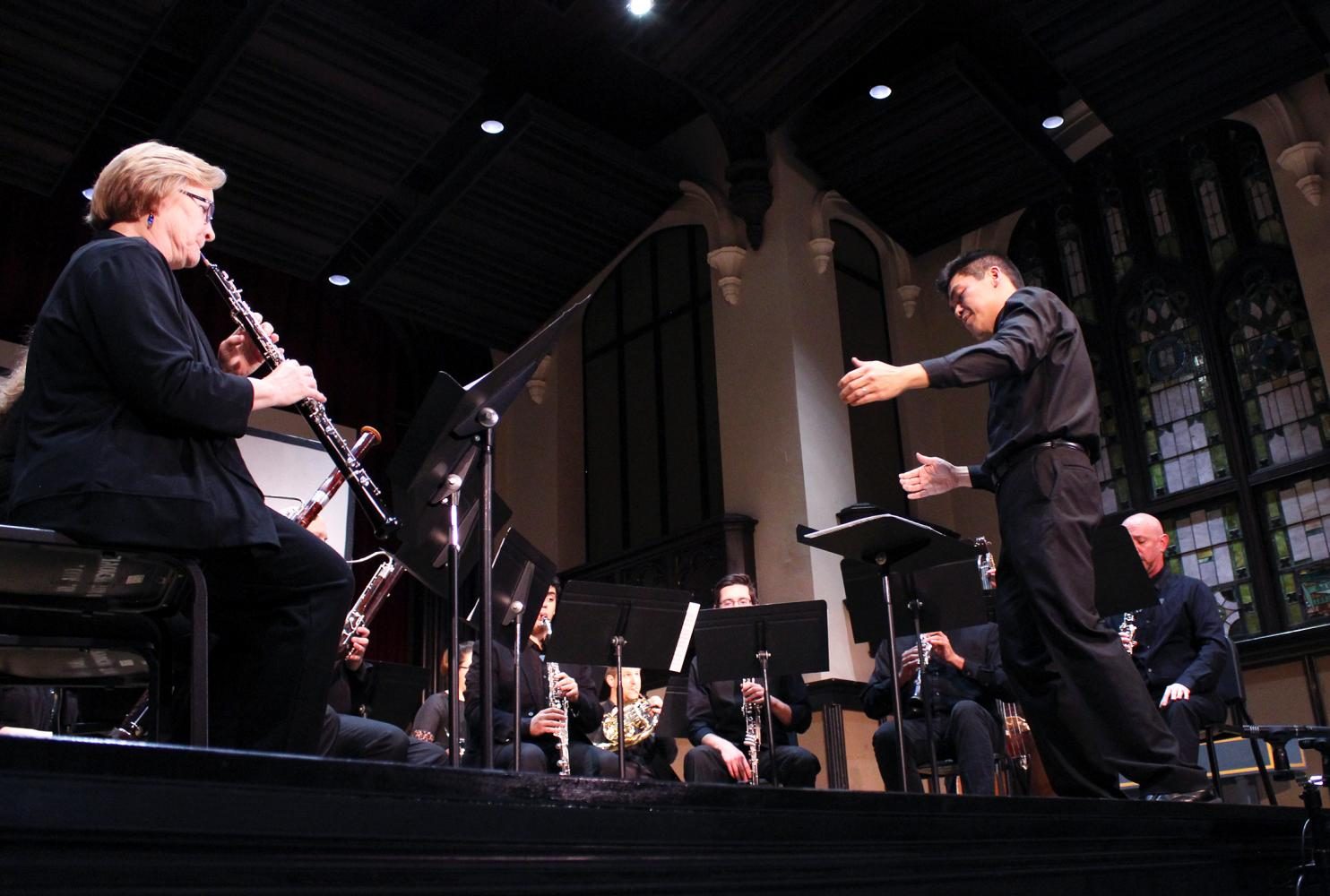Palouse musicians localize movie favorites
WSU and UI musicians gathered to play the “Music at the Movies”
ALEX PETTIT ESTELL | The Daily Evergreen
WSU associate professor of music Danh Pham conducted a performance of “Serenade No. 10 in B-flat Major” during “Music from the Palouse.”
September 21, 2017
As films played in the background, the musicians played the pieces, keeping in perfect time with the visuals on the screen.
“Music from the Palouse: Music at the Movies” displayed high levels of artistry and connection to the pieces of film and music that had been portrayed. While sitting in the chair as an observer, the instrumentalists played the pieces with a sense of passion, swaying and moving to the emotional and calming parts, with little jerks emphasizing the eerie mood that the composer of the piece wanted you to feel.
The last movement of the first piece was “The Secret of Death Valley” by Harvey Sollberger. A silent film was playing behind as the instrumentalists were playing along to it. Their playing blended seamlessly into the movie like the movie was played to the music, not the other way around. Every note coincided with a movement, whether it is the movement of a train, a hand, or the gaze of a person.
In contrast, the second piece of the night, “Suite No. 4 in D Minor, HWV 437” by George Frideric Handel, took the audience back to the late renaissance, as a harpsichord was played by University of Idaho professor Rajung Yang. The melodies were flowing along with her playing and displaying the mastery of the keyboard instrument.
“Piano Trio in E-Flat, Op. 100” by Franz Schubert was performed with UI professors Giselle Hillyer on violin, Miranda Wilson on cello and Roger McVey on piano. The piece was a mix of three voices playing and responding to the other instruments in a call that allowed a conversation to flow between the violin, cello and piano.
The fourth piece, “Hiding and Being Found,” was composed by UI professor Ruby Fulton. This piece was Fulton’s premiere composition, focusing of the unconventional and a surrealist view. The accompanying film by Chad Burt was a response to music.
Under the direction of Danh Pham, WSU assistant music professor, the piece begins with a locomotive feel as the camera panned across a landscape view of woods. Then you get introduced to a character dressed from head to toe in camouflage. The camera moved across the landscape following the character in a melodious song. As the song reached its climax, cellos created an eerie mood with their bowing and the film changes from day to night before it concludes in a melodious and peaceful end.
A rendition of “Gabriel’s Oboe,” taken from the film, “The Mission,” begins slow and melodic, reminiscent of the movie version, all focus is on the oboist, Keri McCarthy, bringing the piece to life and sticking itself to the roots of the movie version.
The final piece of the night was Wolfgang Amadeus Mozart’s “Serenade No. 10 in B-Flat Major K. 361, ‘Gran Partita,’ ” a short clip from the film “Amadeus” was then shown on the screen, putting into context that Antonio Salieri was jealous of this piece because it came from Mozart whom he deemed to be a child.
When listening to the piece you hear the dedication and respect the performers had for this song, because like the Salieri in the movie said, “It seemed to me I was hearing the very voice of God.” The artistry of the instrumentalists was sure to have astounded everyone.




















